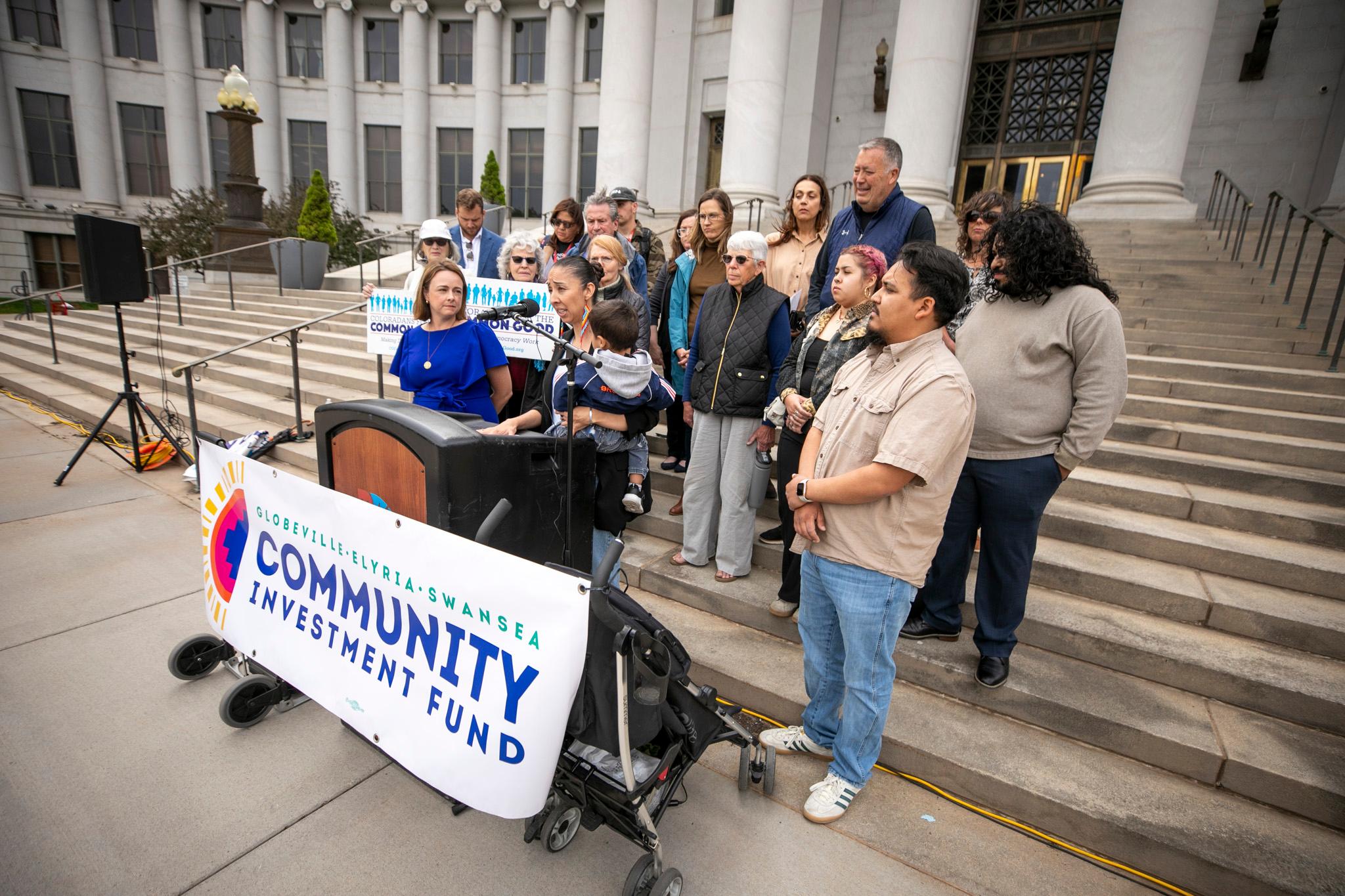
There are four light rail stations in or planned for Globeville, Elyria and Swansea, and as those stations come online, Denver wants to encourage a lot more people to live and work around them. Someone's gotta ride those trains.
Development around these stations is the centerpiece of the city's long-term vision for a much less car-dependent Denver that can house a lot more people. But investment in transit infrastructure and the development that follows is closely associated with gentrification.
The city has said it will adopt policies to promote affordable housing around transit stations, and developers of income-restricted housing are buying up parcels near stations now, while they are still relatively affordable.

Nonetheless, the building that comes next will represent a radical change from the low-slung industrial buildings bordered by two-story residential neighborhoods that you see today as you travel up Brighton and through Globeville, Elyria and Swansea.
There is a plan to allow 12-story buildings along most of Brighton to I-70.
A set of height amendments and a rezoning initiated by the city around the 38th and Blake station area is expected to go before Planning Board in August and City Council in September.
This project, like others in RiNo, is under the umbrella of the North Denver Cornerstone Collaborative that is also overseeing the National Western redevelopment and the implementation of the neighborhood plans. The city sees the redevelopment of Brighton as intimately connected to the changes coming for the north side of I-70.
That station is the first one out of downtown on the new A Line and the current rules allow buildings from three to 12 stories, depending on the zoning, but the tallest heights aren't necessarily on the land closest to the transit station.
The proposed height amendments would allow 16-story buildings in the area closest to the station and 12-story buildings all the way up Brighton Boulevard to I-70 and on the west side of the South Platte River.

This area is mostly low-slung industrial buildings right now, many of them repurposed, with new apartment buildings springing up closer to downtown.
Where the station area plan borders residential areas in the Cole neighborhood to the east or in Globeville, near 44th and Washington streets, the plan recommends stepping down the building heights: eight-, then five-, then three-story buildings.

There are a lot of competing concerns: allowing enough density to support transit and affordable housing, protecting the character of nearby residential areas, avoiding a canyon effect along the river or on neighborhood streets.
The 38th and Blake station area is the most primed for redevelopment.
But it's just one of four stations that will affect Globeville, Elyria and Swansea.
The city divides RTD stations into three categories: energize, catalyze and strategize. "Energize" stations are basically ready to go and have good market conditions and few barriers to development. Think I-25 and Broadway or Louisiana and Pearl. "Catalyze" stations also have good market conditions, but they need specific infrastructure or amenity improvements to realize their potential. Catalyze stations include 38th and Blake or areas like the Welton/Downing corridor.
"Strategize" station have less favorable market conditions but also barriers to development. Neighborhoods might not be very walkable or need much more extensive improvements to get the interest of private developers. These aren't just in poorer, urban areas. They include stations like 61st and Peña out east or Southmoor near I-25 and Hamden. There are barriers to making transit-oriented development work, and the city needs to overcome those to more fully develop its plans.
The next stop east on the A Line lies at the other edge of Elyria-Swansea at 40th Avenue and Colorado Boulevard, which is a strategize station. That area probably isn't quite ripe for transit-oriented development. Apartments and mixed-use developments have been going in on the east side of Colorado for several years, but there has been a lot less activity west of Colorado Projects identified in the neighborhood plans, like improvements to 40th Avenue, filling in the Market Lead and improving bicycle and pedestrian connections, could help it get there.
The National Western Stock Show station, at 48th Avenue and Brighton Boulevard on the North Metro Line, which should open by 2018, is also considered a strategize station. At least one future housing development, an Urban Land Conservancy-owned site at 4800 Race St. in Elyria, is oriented toward that station for daily use, not just special events. Most of the land around the station is industrial right now.
The Gold Line, which goes to Wheat Ridge and is expected to open in late 2016, has a stop at 41st and Fox in Globeville. Like 38th and Blake, that station is considered a catalyze station with higher potential for transit-oriented development. A 2009 station area plan calls for a mix of office and residential uses and building heights up to 20 stories on some blocks.
Next steps:
Community Planning and Development holds public meeting No. 5 on the height amendments near 38th and Blake on July 13. This one will focus on design standards for the station area.
- When: 5:30 to 7:30 p.m. July 13
- Where: EXDO Event Center, 1399 35th St.
You can comment on the draft height amendments until July 22 by emailing Senior City Planner Tim Watkins at [email protected].











